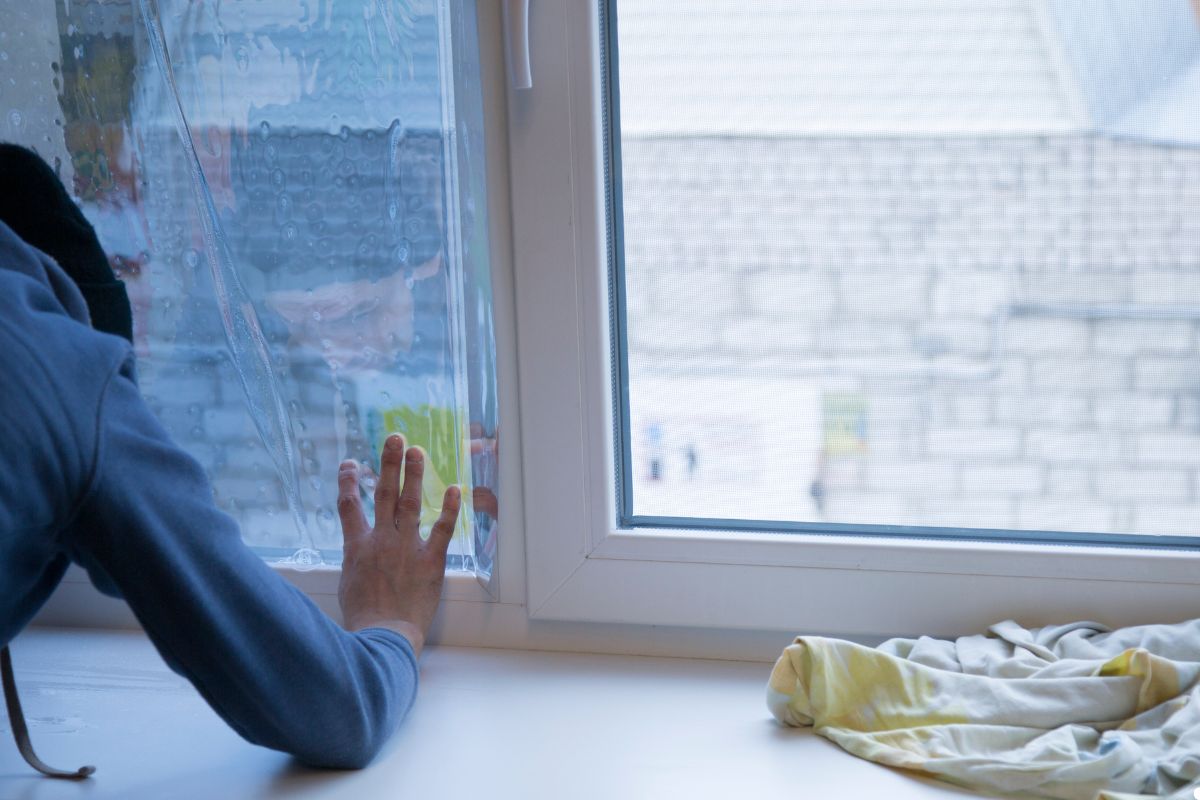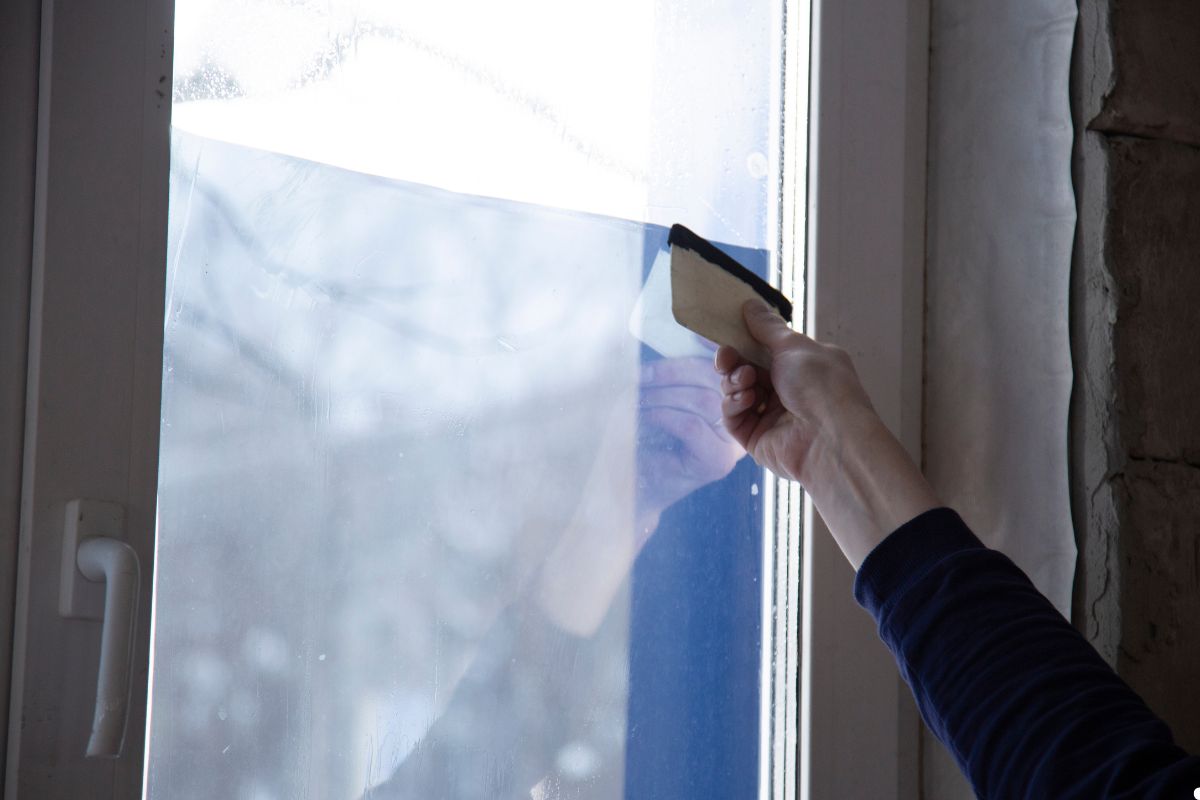
Yes, tinted window film can be a highly effective way to protect your historic USA home from harmful UV rays. By blocking a significant percentage of UV radiation, these films can help prevent fading, damage to furniture and artwork, and even reduce health risks. This article will delve into the benefits of window film, how it works, considerations for preserving the historical integrity of your home, and what to keep in mind when selecting and installing window film. Call us today to learn more about how window film can protect and preserve your historic home!
The Invisible Danger: How UV Rays Harm Your Home and Health
Ultraviolet (UV) rays are a form of electromagnetic radiation emitted by the sun. While essential for vitamin D production, excessive exposure can be detrimental. UV rays are the primary culprit behind the fading and degradation of interior furnishings. Think about your antique furniture, delicate fabrics, irreplaceable artwork, and valuable rugs. UV rays break down the chemical bonds in dyes and materials, leading to discoloration and weakening. Moreover, prolonged UV exposure poses health risks to you and your family, increasing the risk of skin cancer and premature aging. Protecting your home means tackling every threat, from UV rays to stubborn mineral stains—trust our hard water stain removal service for a spotless finish.

What is Window Film and How Does It Work?
Window film is a thin laminate applied to the interior surface of glass windows. It’s typically made of polyester and features a scratch-resistant coating. Its primary function is to filter out solar radiation, including harmful UV rays. The key to its effectiveness lies in its ability to block a high percentage of UV light while allowing visible light to pass through.
There are various Types of Window Film Available, each with its own characteristics:
- Dyed Films: These are the most basic and cost-effective. They primarily absorb sunlight.
- Metallized Films: These films reflect sunlight, offering superior heat rejection.
- Ceramic Films: These advanced films use ceramic particles to block UV and infrared light without significantly reducing visible light transmission.
- Clear UV Films: Designed to block UV rays without altering the appearance of the glass. These are ideal for historic preservation where maintaining the original aesthetic is critical.
Understanding Visible Light Transmission (VLT) is essential. VLT refers to the percentage of visible light that passes through the window film. Lower VLT films will appear darker, while higher VLT films are virtually clear. For historic homes, you’ll want to carefully consider VLT to maintain the original look and feel of the building.
Preserving History and Enhancing Comfort
Window film offers a host of benefits for historic homes beyond just UV protection.
- Protects Interior Furnishings: As mentioned, it shields valuable furniture, fabrics, and artwork from fading and damage.
- Reduces Glare and Improves Comfort: Window film can significantly reduce glare, making it easier to read, watch television, and generally enjoy your living space. This enhances comfort without sacrificing natural light.
- Maintains Aesthetic Appeal and Energy Efficiency: With the right VLT and film type, you can protect your home while maintaining its original aesthetic charm. Plus, window film helps regulate indoor temperatures, leading to energy savings by reducing the need for excessive heating and cooling.
Choosing the Right Film Without Compromising History
One of the biggest concerns for owners of historic homes is preserving their architectural integrity. This is where careful consideration and expertise are crucial.
- Working with Preservation Guidelines: Before installing any window film, check with your local historical society or preservation commission. Many areas have specific guidelines regarding alterations to historic buildings.
- Selecting Low-Reflectivity Films: Opt for films with low reflectivity to avoid altering the exterior appearance of your windows. Clear or lightly tinted films are often the best choice.
- Professional Consultation is Key: Work with a qualified window film installer who understands historic preservation principles. They can guide you through the selection process and ensure proper installation.
Real-World Examples of Window Film Protecting Historic Treasures
Across the USA, window film has been successfully implemented in numerous historic preservation projects. Here are some brief examples:
- The Gamble House (Pasadena, CA): Window film helped to protect the interior wood and textiles of this National Historic Landmark without altering its Craftsman aesthetic.
- Monticello (Charlottesville, VA): Specialty films were used to reduce UV damage to Thomas Jefferson’s personal items and artwork.
- Old North Church (Boston, MA): UV-blocking film safeguards the historic artifacts and architecture of this iconic landmark.
Is the sun’s relentless UV assault threatening the cherished contents of your historic home? Don’t wait!
Proper Installation for Maximum Protection
The effectiveness of window film depends heavily on proper installation.
- Professional Installation vs. DIY: While DIY kits are available, professional installation is highly recommended for historic homes. Installers have the expertise and specialized tools to ensure a flawless application that won’t damage the original glass.
- Cleaning and Maintenance Tips: To prolong the life of your window film, use a mild soap and water solution with a soft cloth. Avoid abrasive cleaners or harsh chemicals.
Debunking Myths About Window Film and Historic Homes
Let’s address some common misconceptions:
- Myth: Window Film Will Darken the Room: False! Many modern window films, particularly ceramic and clear UV films, offer excellent UV protection without significantly reducing visible light.
- Myth: Window Film is Expensive: While there is an initial investment, the long-term savings on energy costs and furniture preservation often outweigh the upfront expense. Plus, it’s far less expensive than replacing antique furniture or artwork damaged by UV radiation.
- Myth: Window Film Will Damage the Glass: Not true! Modern window films are designed to be safe for glass and won’t cause damage when properly installed and removed (if ever needed).
Stop worrying about the what-ifs and take action to safeguard your home’s history!
How to Choose the Right Professional for Your Historic Home
Selecting the right window film installer is crucial for ensuring the best results and avoiding potential damage to your historic home.
- Checking Credentials and Experience: Look for installers who are certified by reputable organizations like the International Window Film Association (IWFA). Verify their experience working with historic buildings.
- Asking for References and Portfolio: Request references from previous clients and review their portfolio to see examples of their work on similar projects.
- Getting Multiple Quotes: Obtain quotes from several installers to compare pricing and services. Don’t automatically choose the lowest bid; prioritize experience and qualifications.

Protecting Your Historic Home: Window Film as a Sustainable Solution
Window film offers a sustainable and effective way to protect your historic home from harmful UV rays while preserving its architectural integrity. It’s a valuable investment that can save you money on energy costs, protect your valuable furnishings, and enhance your overall comfort.
Don’t let the sun’s damaging rays compromise the beauty and history of your home. Call us today to learn more about window film options and find a qualified installer in your area.
Frequently Asked Questions About Window Film for Historic Homes
Will window film change the appearance of my historic windows?
Modern films are designed to be virtually invisible. Clear and lightly tinted options minimize visual impact while providing UV protection.
Is window film approved for use on historic buildings?
It depends on local regulations. Check with your local historical society or preservation commission before proceeding.
How much does it cost to install window film on a historic home?
Costs vary depending on the size of the windows, the type of film, and the complexity of the installation. Get quotes from multiple installers for accurate pricing.
How long does window film last?
High-quality window film can last for 10-20 years with proper maintenance.
Does window film block all UV rays?
Most window films block 99% or more of harmful UV rays.
Will window film make my historic home darker?
No necessarily. You can choose films with high VLT to minimize any noticeable change in light levels. Want clearer windows without losing natural light? Contact us today to explore high VLT film options!


